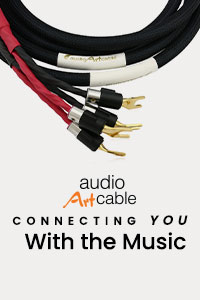Naim NAIT 3R
 My love for British hi-fi can be traced directly to a Naim NAIT 2 that I purchased back in 1992. This little integrated amplifier, rated at between 15 and 21 watts per channel, taught me that power ratings were relative, and that a modest amp could sound more musical than the big 100wpc Japanese amplifier that it replaced. The only real flaw with the wonderful-sounding NAIT 2 was its inability to play large symphonic pieces and loud rock ‘n’ roll with any sort of authority. When pushed too far, the tiny Naim would break down, and its soundstage would collapse, sounding like an old Zenith console television.
My love for British hi-fi can be traced directly to a Naim NAIT 2 that I purchased back in 1992. This little integrated amplifier, rated at between 15 and 21 watts per channel, taught me that power ratings were relative, and that a modest amp could sound more musical than the big 100wpc Japanese amplifier that it replaced. The only real flaw with the wonderful-sounding NAIT 2 was its inability to play large symphonic pieces and loud rock ‘n’ roll with any sort of authority. When pushed too far, the tiny Naim would break down, and its soundstage would collapse, sounding like an old Zenith console television.
The NAIT 3, introduced in 1993, now had 30 watts per channel so that it could be compatible with a broader range of speakers. The unit we have here is actually the 3R, a remote-controlled version, released a couple of years later. To my surprise, this 14-year-old unit could actually be controlled with our publishers R-Com remote. When it comes to promoting brand loyalty through these kinds of details, Naim is certainly a leader in the industry.
The 3R brought back a wave of nostalgia since it uses the same case as the CD3 CD player I used for over a decade. I had a brief chuckle at the input marked “VCR” on the front panel, but I also sighed at the lack of one marked “PHONO,” which was present on my NAIT 2. (That was a killer little MM section, too.) If your NAIT 3 was blessed with a phono stage, the AUX button was replaced with one marked PHONO.
While the phono stage uses standard RCA jacks, the rest of the inputs will require DIN cables. Fortunately I still have some Naim DIN cables from the old days, so I could get right to listening; and I had the Shanling CD-T1500 CD player and my Lehmann Audio Black Cube phono preamplifier connected straight away. The speaker connections only offer one choice; banana plugs. During the Vereker years when the Nait 3 was made, there was only one choice of speaker cable too. If you didn’t hook up your speakers with Naim issued NACA5 cable, your warranty was void as this cable was one of the only ones that would properly load the output stage. Luckily, I still had a pair of these hanging around.
 I couldn’t help but crack a huge smile as the Naim logo on the front panel started glowing that familiar shade of green, and I settled in for several enjoyable listening sessions.
I couldn’t help but crack a huge smile as the Naim logo on the front panel started glowing that familiar shade of green, and I settled in for several enjoyable listening sessions.
The NAIT 3R was made during the “old Naim” days when PRaT (Pace, rhythm and Timing) ruled the day, meaning soundstaging and imaging were a lesser priority in the name of toe-tapping rhythms and tonal accuracy. While that certainly isn’t as bad as it sounds, Naim loyalists know that in the 21st century, you can have it all, but many still enjoy the vintage Naim sound too. The soundstage depth of the NAIT 3R was fairly shallow and sounded like my Harbeth 40.1s had been pushed against the back wall. Imaging suffered slightly, with everything sounding more blurred and forward than with my reference gear.
The NAIT 3R’s strong suit was the way it presented acoustic musical instruments, with excellent tonality. Just like my NAIT 2, this is a fantastic amp for listening to intimate jazz and chamber music. You can easily hear the woodiness of various cellos, and the sensation of air being forced from the chest cavity of singers during loud passages. Hauling out my old faithful Spendor S20’s that I used to use with my NAIT 2, I noticed how the NAIT 3 could be played considerably louder before clipping set in. Though nowhere near as authoratative as the Monitor 40.1’s, I was still able to turn up the volume without the size and scope of the music folding in on itself.
 If you’re using a pair of older BBC monitors from Rogers, Spendor or Harbeth, I think that this NAIT will make an excellent mate, especially if you are a PRaT junkie and crave it on a regular basis. It’s no secret that most of the popular British speakers offer good synergy with past and current vintage Naim electronics.
If you’re using a pair of older BBC monitors from Rogers, Spendor or Harbeth, I think that this NAIT will make an excellent mate, especially if you are a PRaT junkie and crave it on a regular basis. It’s no secret that most of the popular British speakers offer good synergy with past and current vintage Naim electronics.
Originally selling for $1,600, the unit you see here is available at Echo Audio in Portland, Oregon for $695. A quick check of Audiogon and EBay proves this to be right on the money for a clean Nait 3R. While Naim gear has an excellent reputation for long term reliability, these are getting somewhat long in the tooth, so if you really love this sound, budget for a recap sometime in the next few years. This will probably set you back about another $250, but well worth it and should give you another 20 years of excellent performance. –Marc Phillips
Publishers note: Should you be more curious about vintage Naim gear, their website features a forum with some very knowledgeable Naim owners that can point you in the right direction.





